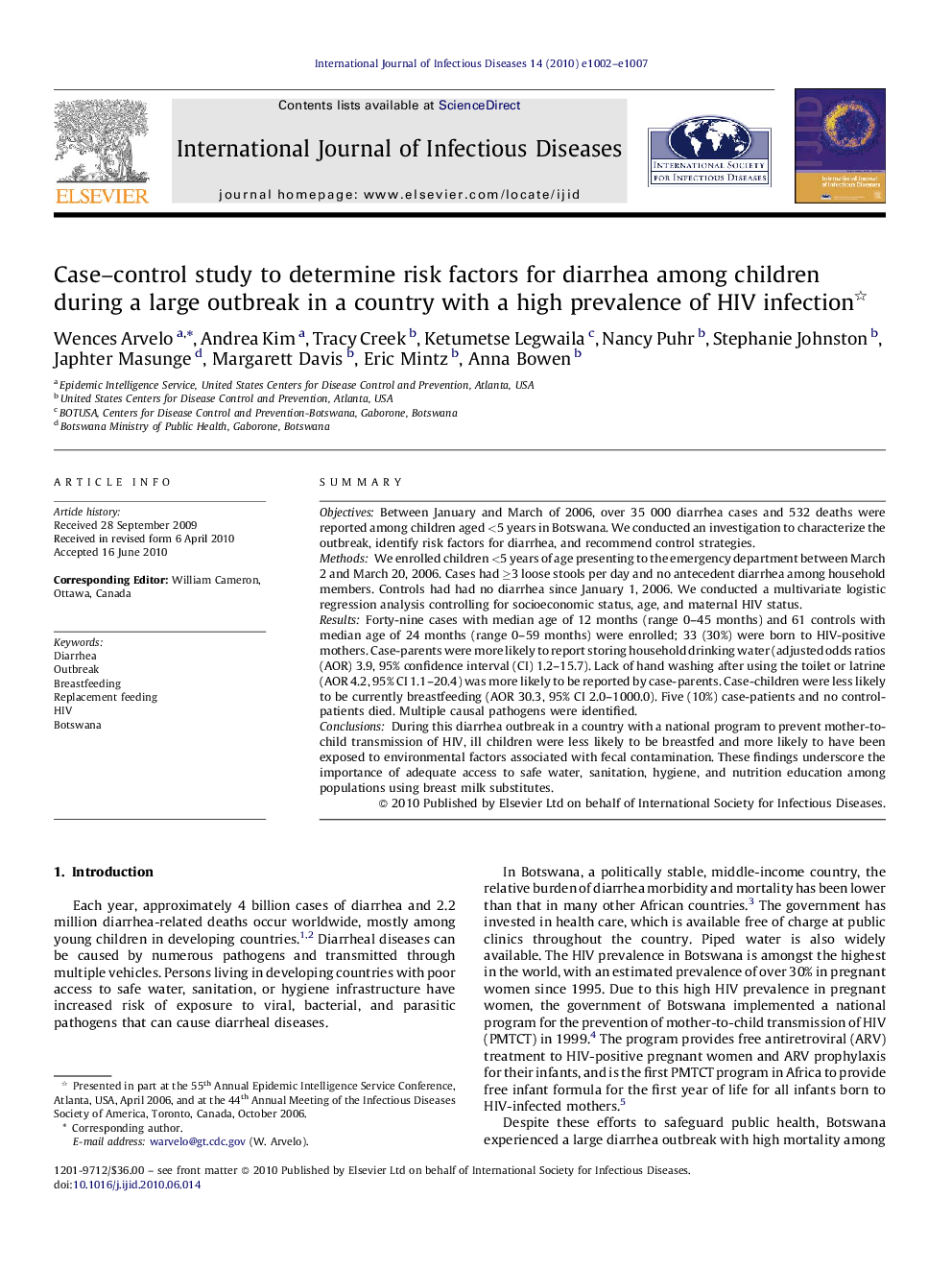| Article ID | Journal | Published Year | Pages | File Type |
|---|---|---|---|---|
| 3363824 | International Journal of Infectious Diseases | 2010 | 6 Pages |
SummaryObjectivesBetween January and March of 2006, over 35 000 diarrhea cases and 532 deaths were reported among children aged <5 years in Botswana. We conducted an investigation to characterize the outbreak, identify risk factors for diarrhea, and recommend control strategies.MethodsWe enrolled children <5 years of age presenting to the emergency department between March 2 and March 20, 2006. Cases had ≥3 loose stools per day and no antecedent diarrhea among household members. Controls had had no diarrhea since January 1, 2006. We conducted a multivariate logistic regression analysis controlling for socioeconomic status, age, and maternal HIV status.ResultsForty-nine cases with median age of 12 months (range 0–45 months) and 61 controls with median age of 24 months (range 0–59 months) were enrolled; 33 (30%) were born to HIV-positive mothers. Case-parents were more likely to report storing household drinking water (adjusted odds ratios (AOR) 3.9, 95% confidence interval (CI) 1.2–15.7). Lack of hand washing after using the toilet or latrine (AOR 4.2, 95% CI 1.1–20.4) was more likely to be reported by case-parents. Case-children were less likely to be currently breastfeeding (AOR 30.3, 95% CI 2.0–1000.0). Five (10%) case-patients and no control-patients died. Multiple causal pathogens were identified.ConclusionsDuring this diarrhea outbreak in a country with a national program to prevent mother-to-child transmission of HIV, ill children were less likely to be breastfed and more likely to have been exposed to environmental factors associated with fecal contamination. These findings underscore the importance of adequate access to safe water, sanitation, hygiene, and nutrition education among populations using breast milk substitutes.
